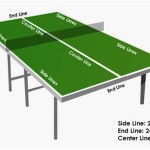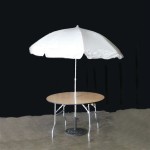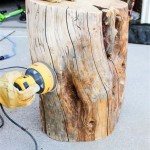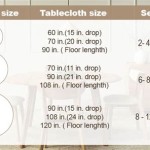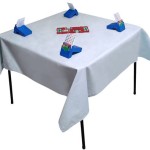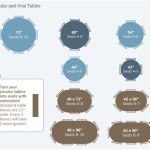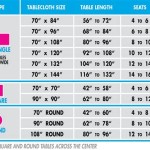How to Set a Formal Dinner Table: A Comprehensive Guide
A formal dinner table setting is a beautiful and elegant way to create a sophisticated atmosphere for special occasions. It signifies meticulous attention to detail and enhances the enjoyment of the dining experience. Whether you're hosting a celebratory gathering or simply wish to elevate your everyday meals, understanding the proper etiquette and techniques for setting a formal dinner table will impress your guests and set the stage for a memorable occasion.
The Foundation: Tablecloth and Placemats
The foundation of a formal dinner table setting begins with the tablecloth and, optionally, placemats. The correct tablecloth should be crisp, clean, and ideally made from linen or a high-quality fabric. The color should complement the occasion and the overall theme. If using placemats, they should be made of a material that complements the tablecloth and provide a subtle contrast. The size of the tablecloth is crucial; it should be long enough to drape slightly over the table's edge on all sides, ensuring a polished look.
Laying the Groundwork: Plates and Utensils
The arrangement of plates and utensils follows a specific order, determined by the courses served. The first step is to place the dinner plate, positioned in the center of each place setting, approximately two inches from the edge of the table. To the left of the dinner plate, place the bread and butter plate, slightly angled for easy access.
Next, arrange the utensils in a specific order, starting from the outside and working inward. The forks are placed on the left side of the dinner plate, while the knives and spoons reside on the right. For a formal setting, you will generally have three forks: the salad fork (small), the dinner fork (larger), and the fish fork (if serving fish). Place these in order, with the salad fork closest to the plate and the dinner fork farthest away.
On the right side of the plate, place the knives, starting with the dinner knife closest to the plate, followed by the fish knife (if serving fish), and lastly, the butter knife placed on top of the bread and butter plate. The spoons are placed on the right side of the knives. The soup spoon (if serving soup) is placed closest to the knives, followed by the dessert spoon placed above the rest of the utensils.
Adding Elegance: Glassware and Napkins
Glassware completes the formal dinner table setting, offering a beautiful and practical element. The placement of glasses follows a specific sequence, moving from left to right. The water glass is placed directly above the dinner knife, followed by the red wine glass placed to the right of the water glass, and the white wine glass situated to the right of the red wine glass. If serving champagne, the champagne flute is typically placed to the right of the white wine glass.
Napkins are an essential part of a formal dinner table setting, serving both practical and aesthetic purposes. The napkin should be linen or a high-quality fabric, folded into a specific shape. Common folding techniques include the fan fold, the diagonal fold, or the simple rectangle fold. The folded napkin is placed on the dinner plate, either directly on top or to the left of the dinner fork. For a more elegant touch, you can consider placing the napkin on a napkin ring.
Personalizing the Setting: Additional Elements
To personalize your formal dinner table setting, consider adding additional elements that enhance the ambiance. A small, individual centerpiece, such as a flower arrangement or a decorative candle, can add visual interest and elegance. Place cards with each guests' names can be placed above the dinner plate, adding a touch of formality and ensuring proper seating arrangements.
Maintaining Order: Proper Etiquette
Once the formal dinner table is set, it is important to maintain proper etiquette throughout the meal. The utensils should be used in a specific order, following the pattern of working from the outside inward. It is considered polite to keep your hands visible, resting them on the table or on your lap when not actively eating. When you are finished with a course, place your cutlery on the plate at a diagonal angle, with the handles facing each other. This signals to the host that you are ready for the next course and allows for efficient service.

Proper Table Setting 101 Everything You Need To Know Emily Post

Place Setting Diagram For A Formal Dinner Krayl Funch
Place Setting Diagrams At Replacements Ltd
How To Set A Table From Basic Formal

Diagram For Formal Table Setting Or Place Settings
Table Setting Chart Fit For A Queen Your Holiday Dinner Here We Are With Luci

How To Set Up A Formal Table Setting San Diego Creative Events

How To Set A Formal Dinner Table Traditional Rules Plus Diagrams Americana Dining Tables Room

How To Set A Table With 5 Place Setting Templates For Every Event Formal Dinner Breakfast Settings

Table Setting Diagrams Formal Fine Casual More Set Ups
Related Posts

